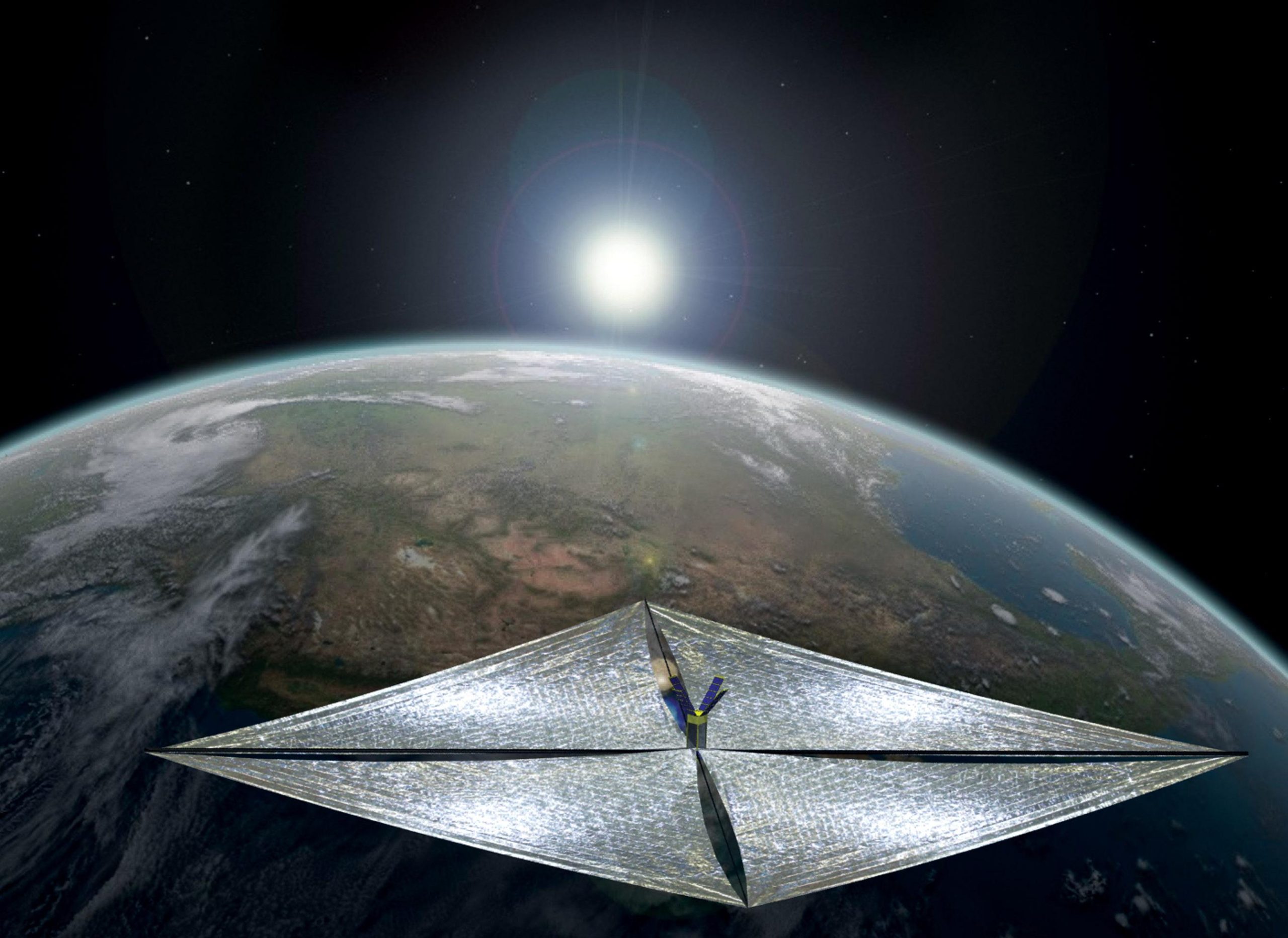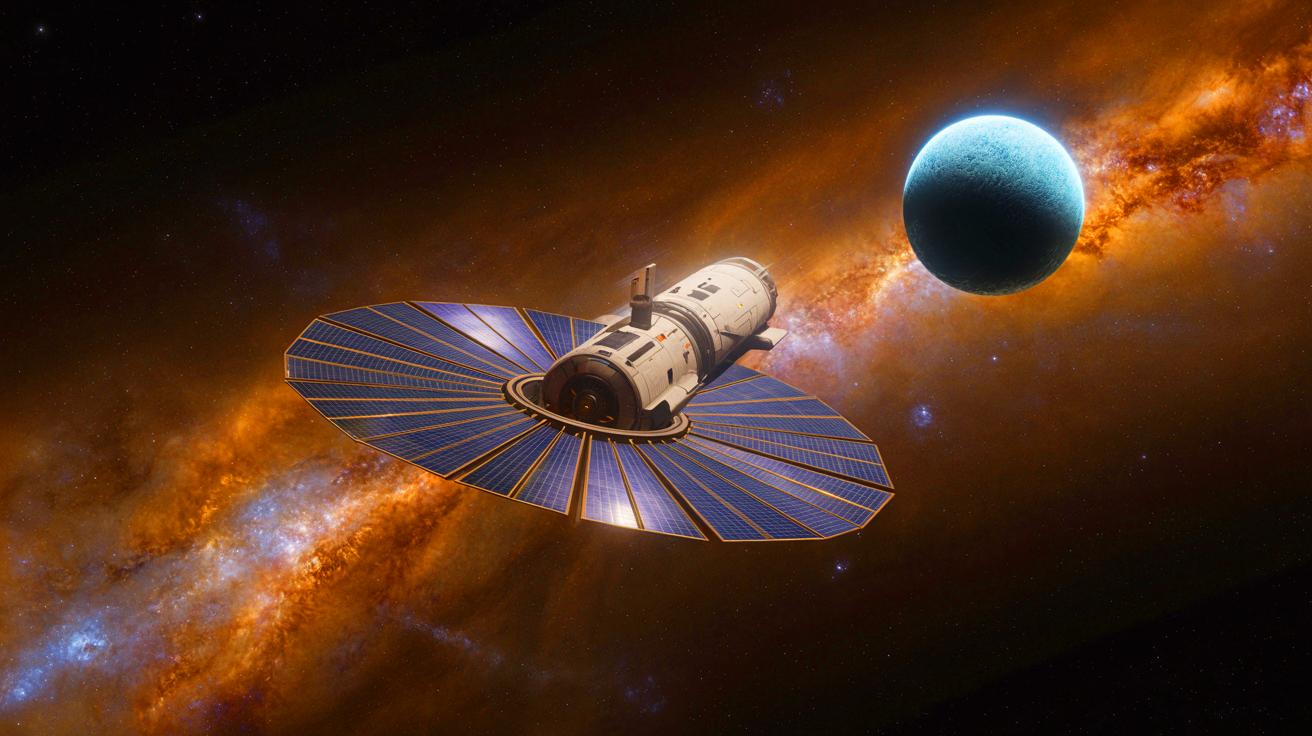| IN A NUTSHELL |
|
As humanity looks to the stars, the dwarf planet Sedna presents an intriguing challenge for scientists and adventurers alike. Located billions of miles from the Sun, Sedna offers a rare opportunity to explore the outer reaches of our solar system. With its next closest approach to the Sun set for 2076, researchers are keen to capitalize on this chance to gather invaluable data about the early solar system. Recently, a team of scientists has proposed utilizing nuclear propulsion and solar sails to reach Sedna in a mere seven years, a feat that could revolutionize space exploration.
Flying to Sedna with Two Experimental Spacecraft Concepts
Back in 2003, astronomers made a groundbreaking discovery when they identified Sedna, a distant object orbiting the Sun far beyond Pluto. Named after the Inuit goddess of the ocean, Sedna provided a tantalizing glimpse into the mysteries of the outer solar system. With a staggering orbital period of 10,000 years, it travels billions of miles from the Sun. However, its upcoming perihelion in 2076 offers a window of opportunity for exploration.
In a recent paper published on arXiv, a team of researchers from Italy outlined two pioneering propulsion concepts that could significantly cut travel time to Sedna. The first involves a nuclear fusion rocket engine, while the second explores the potential of a solar sail. These innovative technologies promise to reduce the journey to Sedna by more than 50%, making it feasible to reach the dwarf planet in just seven to ten years. At its closest approach, Sedna will be within 7 billion miles of the Sun, a distance that might be surmountable with these advanced spacecraft.
“We’ve Never Seen Them This Close”: NASA Tracks Five Giant Asteroids Skimming Past Earth in Record-Breaking Flyby Cluster
Nuclear Propulsion and Solar Sailing
The first of the proposed technologies is the Direct Fusion Drive (DFD) rocket engine, currently under development at Princeton University’s Plasma Physics Laboratory. This engine aims to generate both thrust and electrical power through controlled nuclear fusion reactions. The DFD presents a promising alternative to conventional propulsion methods, offering a high thrust-to-weight ratio and continuous acceleration. However, several engineering challenges remain, such as plasma stability and heat dissipation, which need to be addressed before it can be deployed in deep-space missions.
On the other hand, the concept of solar sailing utilizes the Sun’s energy to propel a lightweight spacecraft at high speeds. This method gained traction with the successful mission of LightSail 2 by The Planetary Society in 2019. In this approach, a large sail captures photons from the Sun, providing thrust without the need for heavy fuel. The Italian researchers propose enhancing this concept by coating the sails with a material that releases molecules when heated, further increasing propulsion through thermal desorption. This could enable a solar sail mission to reach Sedna in just seven years, although it would be limited to a flyby.

“Mars Lost Its Water Here”: NASA Captures Ancient Blast That May Explain How the Red Planet Turned Into a Dusty Wasteland
The Strategic Importance of Sedna Exploration
Exploring Sedna is not just about reaching a distant celestial body; it holds strategic significance in understanding the early solar system. By studying Sedna, scientists hope to uncover clues about the formation and evolution of our solar neighborhood. Sedna’s remote and icy environment may contain preserved materials from the solar system’s infancy, offering insights into the building blocks of planets and other celestial bodies. Such knowledge could reshape our understanding of planetary science and the processes that govern the cosmos.
Moreover, the technological advancements required for a mission to Sedna could have far-reaching implications for future space exploration. The development of nuclear propulsion and solar sailing technologies could pave the way for more ambitious missions to even more distant objects, potentially leading to human exploration beyond the current boundaries of our solar system. As we push the frontiers of space travel, Sedna stands as a gateway to the unknown, beckoning us to venture further into the universe.
“Moon Time Is American Time”: NASA Moves to Set Lunar Time Zone as U.S. Races to Cement Dominance on the Moon
The Challenges and Opportunities Ahead
While the prospect of reaching Sedna in seven years is exciting, it is not without its challenges. Developing and testing the necessary technologies will require significant time, resources, and international collaboration. Overcoming the engineering hurdles associated with nuclear propulsion and solar sails is critical to the success of the mission. Additionally, the mission will need to navigate the logistical complexities of deep-space travel, including communication, navigation, and power generation.
Despite these challenges, the potential rewards of a successful mission to Sedna are immense. By pushing the limits of current space technology, we can open new avenues for exploration and scientific discovery. The pursuit of Sedna is a testament to human ingenuity and our relentless quest for knowledge. As we stand on the brink of this new frontier, one question remains: what other secrets does the universe hold, waiting to be uncovered by our pioneering spirit?
Our author used artificial intelligence to enhance this article.
Did you like it? 4.5/5 (25)
